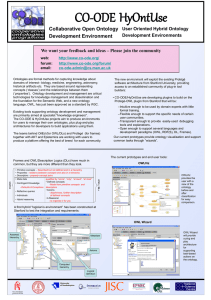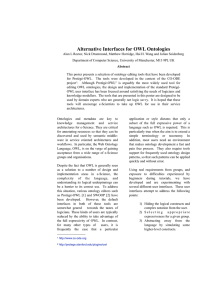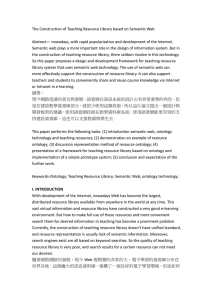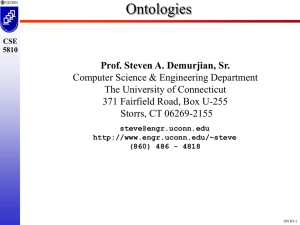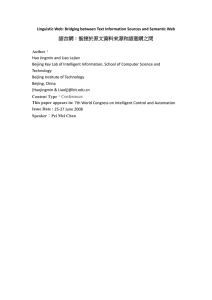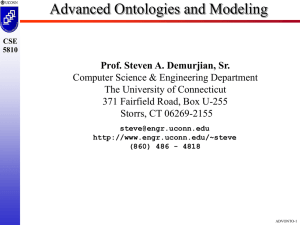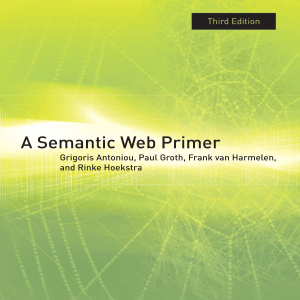An Ontology-based Approach for Managing Software Components
advertisement
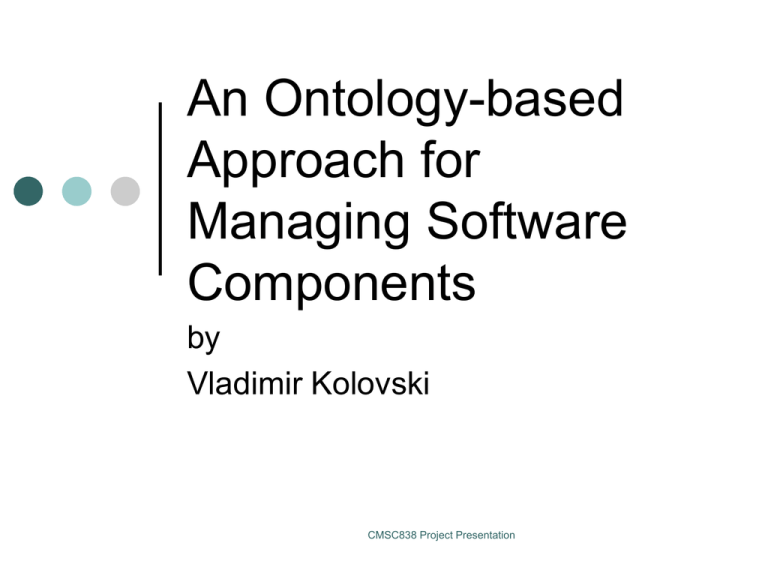
An Ontology-based Approach for Managing Software Components by Vladimir Kolovski CMSC838 Project Presentation Motivation Using off-the-shelf components has proven invaluable development time/production costs dramatically decrease usability increases Application servers as component-based middleware platform for deploying components dynamic loading, naming services, load balancing, etc. CMSC838 Project Presentation Motivation – Use Cases Managing components still a cumbersome task: Component dependencies and versioning Licensing Service Classification and Discovery XML configuration files not enough Explicit formal model would help CMSC838 Project Presentation Introduction to Ontologies Ontology is a controlled vocabulary that describes objects and the relations between them in a formal way May have different structure Logic-based semantics Need to choose a representation language CMSC838 Project Presentation OWL Web Ontology Language (OWL) is a W3C Recommendation Based on XML syntax OWL Lite, OWL-DL, OWL-Full OWL-DL decidable subset of First Order Logic Classes, Individuals, Properties, Restrictions CMSC838 Project Presentation Component Ontology o Profile o Capability descriptions o serviceName, serviceParameter, contactInformation o Implementation o dependsOn, conflictsWith o Grounding Mapping between syntactic and semantic metadata CMSC838 Project Presentation Java Management Extensions Open technology for component management Defines interfaces of managed beans MBeans hosted by an MBeanServer which allows their run time deployment and manipulation JMX is just a specification, MX4J used as an implementation for this project CMSC838 Project Presentation Implementation MBeanServer scans for deployed / undeployed components Ontology and reasoner deployed as an MBean Use OWL API for parsing and Pellet for querying CMSC838 Project Presentation Implementation Component has its own metadata (manually entered for now) Every component is an instance with properties Query ontology when a component is added, look for conflicting ones Also query ontology when a component is removed CMSC838 Project Presentation How do we Query an Ontology? OWL is based on top of RDF RDF model is a graph of triples (Resource, Property, Value) Express the component ontology as an RDF graph Use RDQL, SQL-Like language CMSC838 Project Presentation RDQL Example SELECT * WHERE (?x, Comp:conflictsWith, comp:component1) USING Comp FOR <http://www.mindswap.org/dav/ontologies/Comp.owl #> Returns a list of individuals conflicting with component1 CMSC838 Project Presentation Future Work Short Term Integrate with JBoss’ Component Loader so it would work with MBean dependencies Evaluation (Pet Store) Licensing Long Term Automate retrieving metadata from configuration files • Component grounding CMSC838 Project Presentation Related Work JBoss JBossMX implementation of JMX MBean dependencies RPM Package management system KaON (JBossMX, focused on run-time support, not using OWL) Model Driven Architectures Lack logical formality to query app server at runtime CMSC838 Project Presentation Questions & Comments CMSC838 Project Presentation



